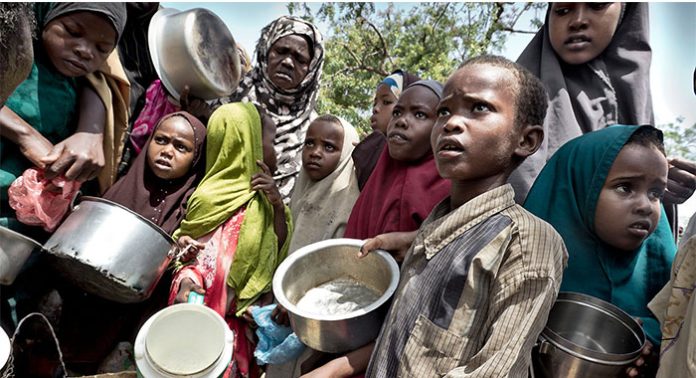The recent report of the United Nations Children’s Fund (UNICEF) 2020 Multidimensional Child Poverty Analysis, which shows that over 47 million Nigerian children accounts for approximately 47.4 percent of the child population currently living in poverty is a sad commentary in every material classification. It conveys the stark reality of the jinxed fate of an average child living in poverty in the country today.
Poverty, which is broadly defined as deprivation of well-being, is most widely measured in monetary terms; that is households having insufficient income to purchase the minimum goods and services they need for survival. Children living in households where consumption falls short of this threshold are considered poor. This threshold, however, differs in each country depending on the standard of living, prices of goods, and other factors.
Presently, millions of Nigerian families are facing severe economic hardships, which disproportionately affect the country’s youngest and most vulnerable citizens living in households that earn less than the national poverty line of N137,430 annually.
In 2007, the United Nations General Assembly’s (UNGA) adopted definition of child poverty specifically states that children living in poverty are deprived of nutrition, water, and sanitation facilities, access to basic health care services, shelter, education, participation and protection. While a severe lack of goods and services hurts every human being, it is most threatening and harmful to children, depriving them of their rights to reach their full potential and to participate as full members of the society.
As a matter of fact, subjecting children to poverty is a violation of their fundamental human rights under the Child Rights Act( CRA2015), right to parental care, protection and maintenance; right to free, compulsory and universal primary education; right to health care services amongst others. It is, however, appalling that the growing economic hardship in the country has contributed immensely to child poverty as many families are living below the poverty line.
The development is a source of concern considering its multidimensional manifestation in poor nutrition, poor health, poor education, and limited capability to maintain livelihoods or participate in society, and not just the requisite income to purchase goods and services.
The multidimensional aspects of poverty affect children because deprivation in early life not only puts them at a disadvantage throughout their life but also inhibit their health and capabilities, increase vulnerability to exploitation and abuse and limits future prospects, which will further constitute damage to the society.
To curtail the relentless cycle of deprivation perpetrated by poverty, which is an infringement on childrens’ human rights, efforts should be geared towards deepening the progress made in poverty reduction since the adoption of the Millennium Development Goals ( MDGs). The achievement of a number of the Sustainable Development Goals (SDGs) such as ending preventable child deaths, ensuring quality basic education for all children and protecting them from violence will go a long way in reducing the scourge of child poverty.
The Federal Government should initiate policies aimed at creating economically sustainable programmes to improve family income and synergise with the states and the local governments to ensure strict implementation of the programs towards lifting most of the vulnerable people out of poverty. Nigeria should understudy how India lifted millions of her citizens out of poverty.
In addition, the government should introduce income redistribution policies in favour of the impoverished, as well as make provision of safety nets as well as other welfare-enhancing programmes required to boost the living conditions of the people and help mitigate the inflationary growth in the economy.


